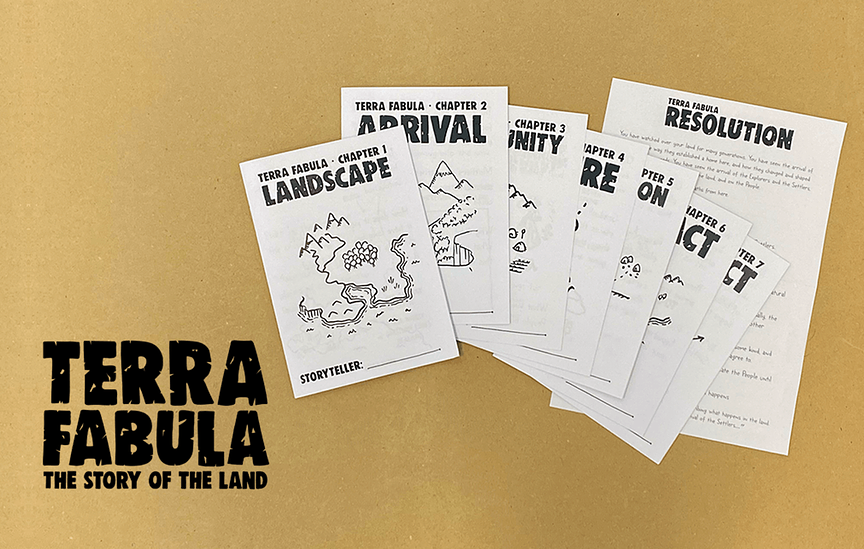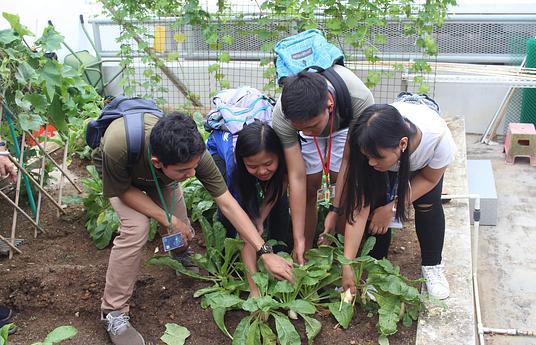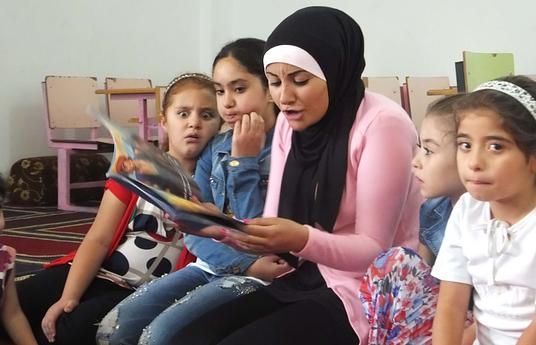Learning about the culture of Indigenous Australians and the impact of European colonisation is a key part of the Australian curriculum for students in Year 4. While many teachers appreciate the importance of the topic, some feel uncomfortable because of the potentially sensitive nature of the material, and others struggle to help students engage on more than a superficial level.
Terra Fabula is designed as a stand-alone pen-and-paper play-based experience lasting 4-6 hours. It guides students through the process of creating a land (through map making), and the arrival of the first People (through narrative writing). They augment their map as they build a community, imagine the culture, and connect with the communities of their classmates. Throughout this process they become invested in the story of their People, over which they have control.
Toward the end of the game, Explorers and Settlers arrive - based on dice rolls they rename landmarks, clear land for crops, raise cattle, and establish towns. Depending on further chance, the People may continue to coexist amongst the Settlers (though some perish from disease), they may be relocated into reservations, or they may be reduced to a handful of survivors hiding in remote parts of the Land.
In the final chapter each student writes a Resolution describing how they want their story to end.
The project is in early stages. After developing the core design last year, we have refined it to a playable version, and earlier this year piloted this with a cohort of Year 4 students. Since then we have run a second pilot with a cohort of Year 3 and 4 students at another school.
The game is still very much in 'beta', but particularly brave educators are welcome to pick up what we have so far and try it in their classroom - we would love to work with anyone interested in doing further pilots in this way.
Beyond that, we are working to refine the materials and produce a (free) 'easy to deploy' kit over the next year or so.



